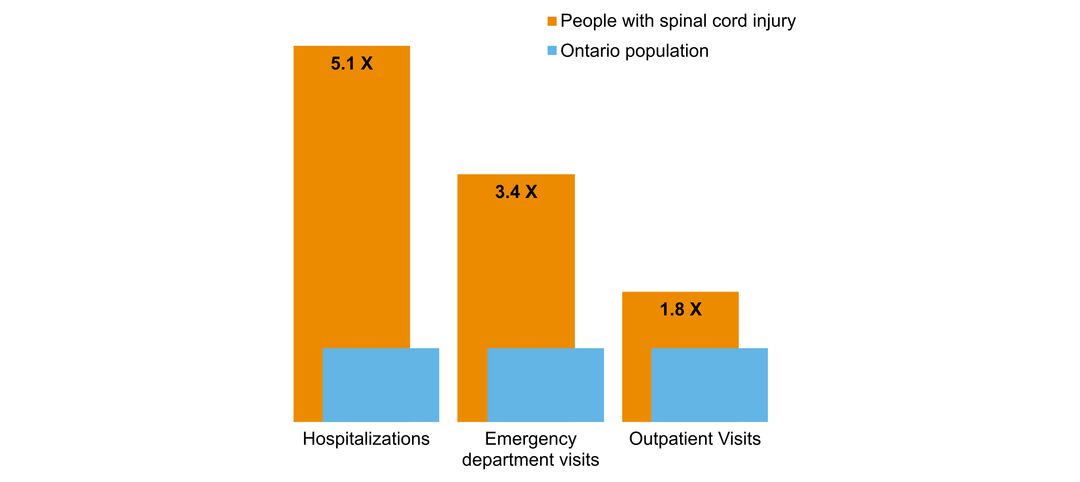Traumatic Spinal Cord Injury
What is it?
A spinal cord injury is an injury to any part of the spinal cord. The spinal cord is responsible for delivering nerve impulses (communication) between the brain and the rest of the body. Damage to the spinal cord can result in weakness or altered sensation (touch, pain, temperature) in areas of the body below the affected level of the spinal cord. It can also be associated with bowel and/or bladder dysfunction.
An injury to the spinal cord can be either partial or complete. With a partial injury to the spinal cord, some communication can still take place between the brain and the rest of the body via the spinal cord. In this case there is only a partial disruption to neurological function (e.g., motor or sensory function). In cases of complete injury, the transmission of information is completely cut off to the parts of the body below the area of injury.
The site of injury on the spinal cord determines how much of the body is affected such that the higher the injury on the spinal cord, the more parts of the body affected. For example, a neck injury can damage the cervical area of the spinal cord, which can affect the arms and legs and lead to quadriplegia. An injury lower down on the spinal cord can leave someone with paraplegia, where the legs are affected but the arms are spared.
Individuals with spinal cord injuries may experience a variety of complications including chronic pain, breathing difficulties and dysfunction of the bladder and bowel. The advances in emergency care can help minimize spinal cord damage, while intensive rehabilitation can help to restore some movement and sensation. Rehabilitation programs typically involve a combination of physical therapy and skill-building activity.
Click to download the chart pack or infographic!
- number of people in Ontario with the disorder
- age of people with the disorder
- sex ratio of people with the disorder
- what other brain disorders commonly co-occur
- overlap with mental health and addictions health system use
- costs & cost drivers associated with health system use







